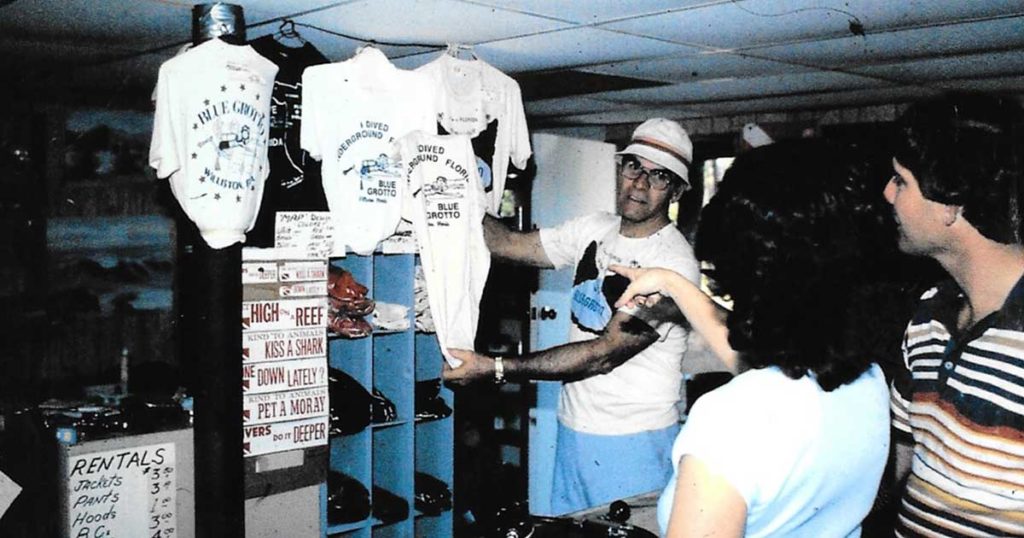Blue Grotto has existed for millennia. However, it has only been open to divers since 1965. During that time, the Grotto has had three owners. It was the first owner, Tom McQuarrie, who had the vision to see what Blue Grotto could become. Without him, the Grotto might still be just a hole in some farmer’s field.
A very different time
Unless you have spent a lifetime in north-central Florida, it’s hard to imagine just how different things were in the early 1960s.
- There were no commercially operated dive sites. Places such as Ginnie Spring, Devil’s Den and Blue Grotto were all private property.
- You could “sneak dive” these sites, but they had no infrastructure. No decks. No stairs. No training platforms. And, very often, a long and treacherous walk to the water coupled with an equally. treacherous entry and exit.
- The locals looked at sinkholes as convenient dumping grounds. The Wray family had to remove more than two-dozen dump truck loads of refuse before opening Ginnie Spring. The bottom of Blue Grotto was similarly littered with trash.
- The bottom of nearby Zuber Sink (later known as Forty Fathom Grotto) still looks like an automotive junkyard with vehicles dating back to the 1930s. Some cars ended up here because drivers missed a sharp bend in the road adjacent to the sink. Others were the carcasses of vehicles that had been to the chop shop and needed to be disposed of somewhere the cops couldn’t find them.
- Local roads were nowhere near as nice as what we have now. The original road to the Grotto was basically two, deeply-rutted tire tracks.
- The Williston intersection where today you find the McDonald’s and Winn-Dixie was originally a giant traffic circle.
Looking to expand
By the time he bought the land surrounding Blue Grotto in 1963, Tom McQuarrie was already operating two businesses in Crystal River. These were Fisherman’s Pier and Aqua Pier. The latter catered to scuba divers.
Tom believed the potential for diving extended far beyond Crystal River. He wanted to buy and develop one of the area’s freshwater springs or sinkholes for scuba divers. After evaluating several sites, he decided that what was then known as Blue Sink had the most potential.
At the time, what Tom would rename Blue Grotto was part of a farm that was home to cattle ranch and a Pecan Grove. After some negotiating, Tom was able to acquire the land immediately surrounding the Grotto.
Part of the negotiating was Tom pointing out that, as people were already sneak diving the site, there was potential for liability that the seller most likely didn’t want to deal with. Tom would later acquire an additional ten acres, leading to the Grotto boundaries you see today.
With the title to the property firmly in hand, the real challenge began. That would be turning the Grotto into a safe and enjoyable site for students and divers.
A history well documented
Telling the story of how Blue Grotto became what it is today will require much more than a single blog post. Fortunately, we have a resource at our disposal without which this would not be possible.
Tom’s son, Tom McQuarrie, Jr., has documented his family’s business history in Crystal River and Blue Grotto: The McQuarrie Chronicles. We have this for sale in the store.
Tom Sr. made his last visit to the Grotto in 2015. He seemed happy to see that the property had developed far beyond his original vision. This meant a lot to us.


